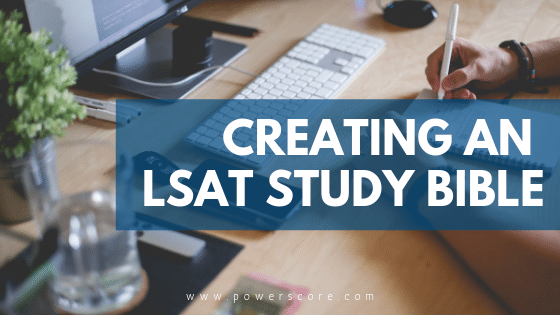If you take our LSAT course, you learn the importance of accurately identifying every element you encounter on the test. In Logical Reasoning questions it might be Assumption or Flaw or underlying conceptual ideas like Causality and Formal Logic. Within a Game, constructs like Grouping and Advanced Linear may be apparent. You must be able to distinguish them consistently from one another so you can be certain your plan of attack is the best one!
It should come as no surprise that we devote plenty of class time and course text to examining these elements. First, we explain how each piece works. In doing so, you learn how each can be consistently recognized, in all its potential iterations. Then, we outline a powerful system by which every idea, question type, and answer choice can be attacked. This ensures students are perfectly equipped to overcome all difficulties on test day. Essentially, we build from the ground up. We instill a strong foundation so that students can examine and conquer the most complex test elements.
It is an effective approach that has helped tens of thousands of students achieve their LSAT goals. For a lot of people it can be intimidating, especially at the outset as they’re encountering concept after concept. It’s easy for categories to get lost in the shuffle or bleed into one another so that distinctions between them become less distinct.
Our goal is to pass along some advice that we’ve given students for years. To take a cue from our best-selling LSAT Bibles and borrowing that nomenclature to describe something you should create for yourself: an LSAT Study Bible. It is similar to a personal journal. Devote short sections to individual ideas, question types, concepts, and anything that needs to be understood independently.
How Do I Start?
A fundamental concept you will encounter in our books and courses is a question type called Must be True. It’s the most commonly-occurring Logical Reasoning question type on the LSAT, in fact. This is a great place to start. Make a page near the beginning labeled “Must be True” and list out its important aspects.
- It’s a First Family question where the stimulus is given as truth and the answer choices are all to be challenged based on it.
- Stimuli tend to be fact sets (premises) rather than arguments. The correct answer will then provide a valid conclusion for that set of facts.
- Because there isn’t typically argumentation in the stimulus, the key to success in MBT is usually dependent on your attention to detail and language. Particularly, does the fact/premise use strong wording?
- Question stems will always tell you to accept the stimulus and determine what follows from/is supported by it. That’s how you know it’s a Must be True question.
- Write out specific examples of question stems that are used in Must be True. Use the wording of a few MBT stems to highlight the recognizable feature.
- The correct answer choice must conform to the Fact Test, where it can always be reasonably inferred ONLY from the information above it, and will never rely on outside knowledge.
- Incorrect answers often present traps like New Information, Could be True, Opposite Answers, Shell Game, and Extreme Language.
As you continue to study, add relevant MBT information to that page if/when you encounter it. Return to it on occasion as you move forward to ensure the information is still fresh. The more you frequent a question type page like MBT, the more you may realize what challenges you the most.
And Repeat!
Once you have one question type hashed out, you have good footing to move forward. Create a page for every major element that appears on the test. Here’s a quick list to get you going. Keep in mind that these scratch the surface! You’ll definitely need to keep identifying pages you should make that will be useful to you.
- Prephrasing
- Principle
- Conditionality
- Causality
- Formal Logic
- Numbers and Percentages
For Reading Comprehension, you can make pages for different passage types.
- Comparative
- Science
- Law
- Diversity
For Logic Games, pick out major Games categories.
- Numerical Distributions
- Templates/Possibilities
Is the Effort of Making One Worth It?
The benefits of this are numerous and hard to overstate. Here are two of the biggest reasons that should motivate you to create your own Self-Study Bible.
- By writing all of this down, in physically distinct pieces you will reinforce critical ideas on the LSAT. If you have a page for each concept, you compartmentalize them in a way that makes mistaken overlap less likely. For instance, writing out the highlights of Assumption questions separately from Justify questions means your brain is much better at treating Assumption and Justify as unique ideas on test day. That’s huge!
- In addition to the categorical reinforcement this exercise provides, you’re creating an extremely valuable physical resource! You’re making an all-in-one repository of information that you can keep as a constant companion while you study. It enables you to refer to and amend as needed based on your performance and growing knowledge base.
As you begin working through material getting ready for the LSAT, immediately start building yourself a Study Bible. It will quickly become your greatest resource the first time you encounter a new or challenging idea. As your knowledge continues to grow, it will remain invaluable.


Elizabeth B. Swanson says
I just started my LSAT study Bible! Thanks for the great article. I find it amusing that many of the comments left here are a bit unintelligible considering we are all looking to become law students. Thanks again, cheers!